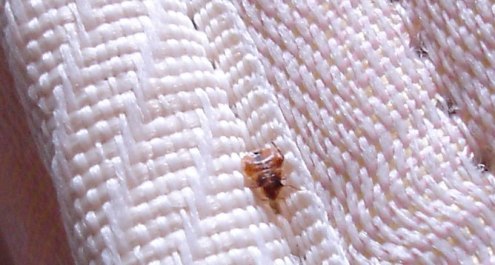
BY RODERICK EIME
A recent compensation payout by a London hotel could lead to a rash (pun intended) of similar claims, hoteliers fear.
Kent (UK) sisters Melanie Carmen and Joy McDonagh, both in their 40s, travelled to London and stayed at the £90/night Airways Hotel in Pimlico, South West London. During the night the women were bitten dozens of times each and required hospital treatment for their painful swellings.
After contacting solicitors, they received over £1,600 in compensation based on pain and suffering.
While the women blamed the conditions of the hotel, bed bugs are easily transportable in clothing and baggage and every hotel runs the risk of an infestation. They can hide easily, go months without feeding, resist treatment and travel easily from room to room or common areas. They hide during the day and feed at night, making them all the more insidious.
While the bug bites themselves are not known to be poisonous or disease-carrying, the bites are unsightly and very irritating – to say nothing about what they can do for the guest experience.
“It’s very unfortunate what happened to these two ladies, but we have no way of being able to trace exactly where these infestations came from,” a hotel spokesman said. “‘This incident happened 18 months ago and experts say there are 20,000 cases of bed bugs in hotels across the UK every year, five-star hotels included, so we’re not immune to the problem. We have a full-time contract with a pest control company and when problems are reported they come in immediately to deal with any issues.”
Glenn DuBois, secretariat of the Sydney-based The Australian Pest Controllers Association Inc and the director of his own company, Fumapest, offers some local observations.
“It’s perfectly true, bed bugs are totally indiscriminate about where they make their home. Our team have responded to infestations in some of the best hotels around Australia,” says Glenn. “What’s important is how hotels respond and how rooms are maintained. Even the cleanest rooms can get infestations, so vigorous vacuuming, steam cleaning and occasional surface spray is important.
“The most common areas are the dark nooks and crannies, bed heads and the folded corners of mattresses.”
Glenn also advises hotels to educate housekeeping staff in the identification of possible bed bug infestations. Clues such as blood spots on linen, dead insects or droppings should ring alarm bells and prompt action should be initiated.
Hotels with persistent infestations should consider ozone treatment. When used under controlled application, ozone (activated oxygen) can eliminate bed bug infestations as well as sanitise and deodorise rooms and have them back in inventory in 24 hours without use of chemicals or other harsh treatments.
“In these circumstances it’s possible to use ultra-high concentrations of natural ozone in ways that have been perfected over many years and are totally safe,” says Graeme Price of Ozone Applications. “indeed much safer than chemicals that are currently used, leaving no toxic residue in the rooms fixtures or furnishings. Due to the nature of ozone and its gaseous properties, ozone will penetrate all areas of a room, even into small and normally inaccessible areas, kill the bedbugs, their eggs and larvae.”

